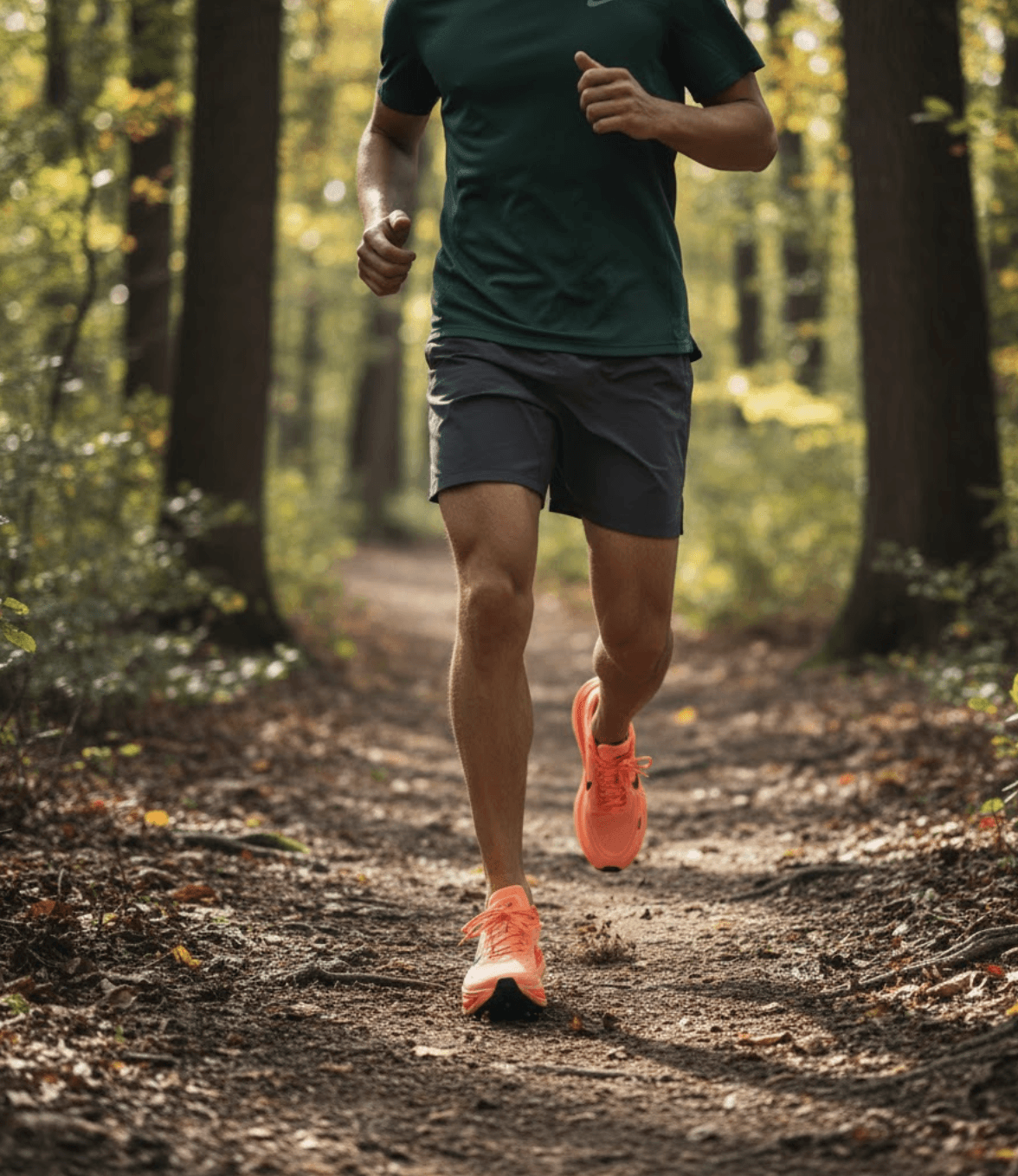
The Myth of the Perfect Running Shoe

By
Dr. Michael Makher
Nov 4, 2025
The idea that a perfect running shoe can prevent injury is outdated. Evidence shows training habits and workload matter far more than shoe type. Learn how to run smarter with insights from modern sports medicine research.
Disclaimer: This article is for educational purposes only. It should not be seen as medical advice. Every case and person is unique, so treatment and prevention should be customized by a licensed professional.
Walk into any running store and you will be met with scanners, gait analyses, and promises of a shoe tailored to your foot type that will prevent injury. It feels scientific and precise. Yet after decades of research, the truth is much simpler and far less glamorous. The perfect running shoe for injury prevention probably does not exist.
For more than forty years, runners have been told that matching shoe features to foot shape reduces injury risk. Studies show this assumption is unfounded. Large controlled trials found no reduction in running-related injuries when shoes were assigned based on arch height or foot type. The notion that a particular shoe can safeguard against pain and stress fractures has not stood up to scrutiny.
Why Runners Still Believe the Shoe Myth
The belief persists because it sounds logical. If an arch collapses, add support. If the foot rolls outward, add cushioning. Yet as Napier and Willy point out, this reasoning falls into what philosophers call an “appeal to nature” fallacy…confusing what seems natural with what is necessarily beneficial. Minimalist, maximalist, zero-drop, and “comfort-based” shoes have all been marketed as the next breakthrough, but none have proven superior at preventing injury.
When tested in controlled studies, switching to minimalist footwear did not improve injury rates or running efficiency, even after extended adaptation periods. Similarly, maximalist shoes have not demonstrated measurable advantages in reducing injury incidence. The takeaway is clear: the shoe itself is not the limiting factor. The runner’s training habits are.
The Real Cause of Running Injuries
Most running injuries are not the result of the shoe on your foot but of how your training stresses your body. Research on bone stress injuries shows that virtually all such injuries arise from workload errors—doing too much, too soon, too often.
Running applies thousands of repetitive loading cycles to bone tissue. When the number and magnitude of those cycles exceed the body’s ability to repair microdamage, injuries appear. The key variable is not the shoe’s design but the rate of training progression. Increasing running intensity too quickly dramatically increases injury risk because bone and connective tissue adapt more slowly than cardiovascular fitness.
What Science Suggests Instead
If injury prevention is the goal, workload management and technique refinement matter more than footwear. Technique refinement is often referred to as gait retraining: which basically means focusing on cadence, stride, and impact reduction. This has been shown to produce greater injury reduction than shoe prescription. In one controlled study, runners who practiced gait retraining experienced a 62 percent reduction in injury rates over a year.
Workload monitoring is equally essential. Bone tissue remodels over weeks to months, and rapid increases in intensity or volume can overload that system. Gradual, periodized training allows the skeleton and soft tissues to adapt while maintaining performance. Strength training also plays a role by improving the muscles’ ability to absorb force and protect bone from fatigue.
Comfort and Familiarity Still Matter
This is not to say shoe choice is meaningless. Comfort influences biomechanics and fatigue tolerance. A shoe that feels comfortable may reduce subtle compensations that accumulate stress over time. However, comfort is subjective, and the right shoe is the one that feels natural under your foot rather than one assigned by an algorithm or arch category.
What Runners Should Focus On
Progress training gradually. Increase volume and intensity carefully over time to avoid overload.
Strengthen supporting muscles. A strong musculoskeletal system reduces the load on joints and bone.
Monitor fatigue. Early rest prevents microdamage from escalating into a stress injury.
Seek guidance when needed. A sports physical therapist or exercise physiologist can assess your running form and training load more effectively than a shoe salesperson.
The Takeaway
The idea that shoe design alone can prevent running injuries is outdated. The science points instead to smarter training and individualized workload management. Shoes matter only insofar as they allow you to move efficiently and comfortably. The body adapts to what it is asked to do, not what it wears on its feet.
The next time someone tells you that a specific shoe can keep you injury-free, remember that your training habits, not your footwear, are the true foundation of injury prevention. So choose the shoes that simply fit the most comfortably for you to do the thing you want to do (whether it's running, walking, basketball, or something altogether different) but don't expect it to be the magic thing that will prevent injury.
Don’t Miss Out
Join our newsletter to get latest research insights.
References
Napier C, Willy RW. Logical fallacies in the running shoe debate: let the evidence guide prescription. Br J Sports Med. 2018;52(24):1552–1553. doi:10.1136/bjsports-2018-100117. Warden SJ, Edwards WB, Willy RW. Preventing bone stress injuries in runners with optimal workload. Curr Osteoporos Rep. 2021;19(3):298–307. doi:10.1007/s11914-021-00666-y.
The idea that a perfect running shoe can prevent injury is outdated. Evidence shows training habits and workload matter far more than shoe type. Learn how to run smarter with insights from modern sports medicine research.



